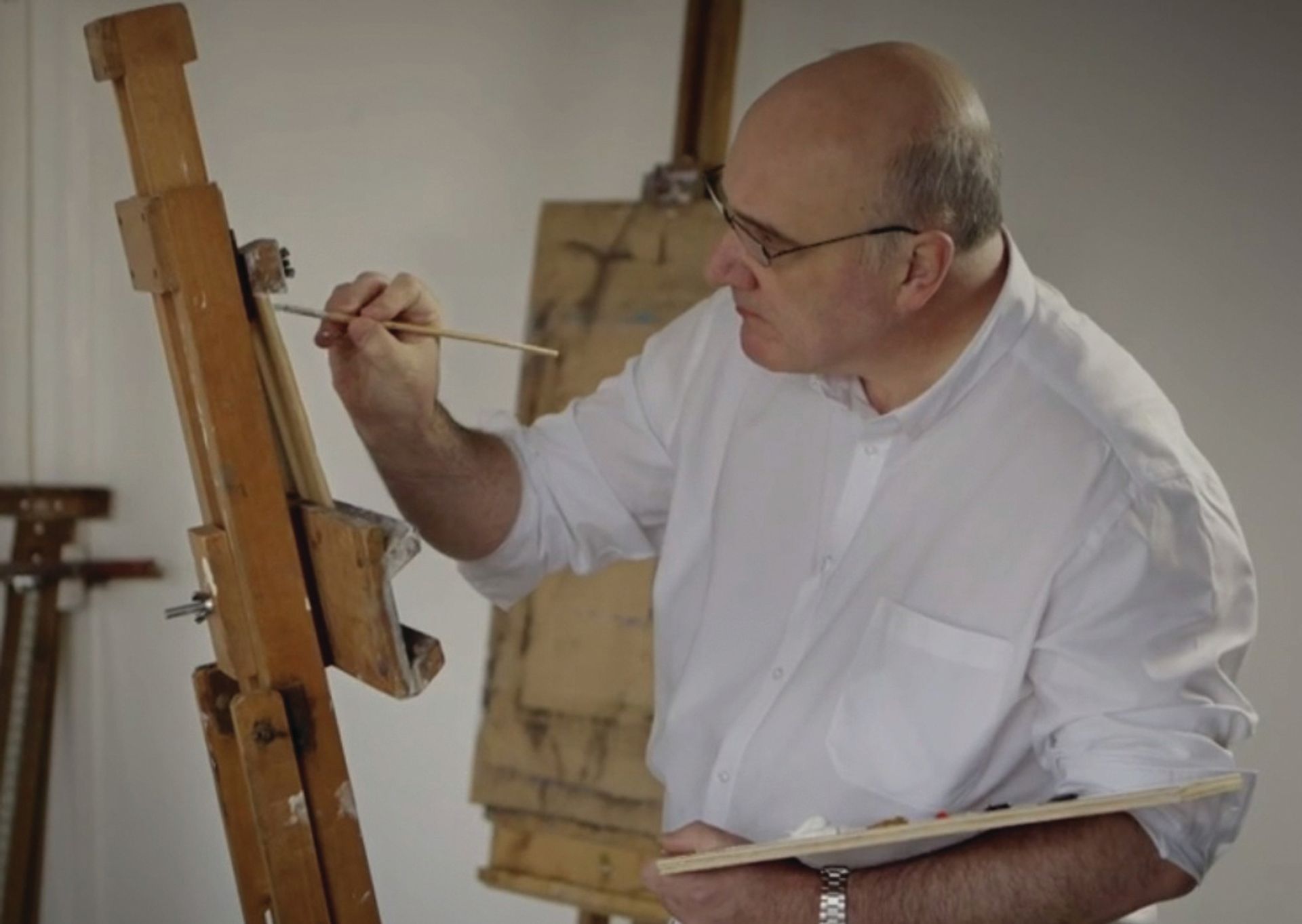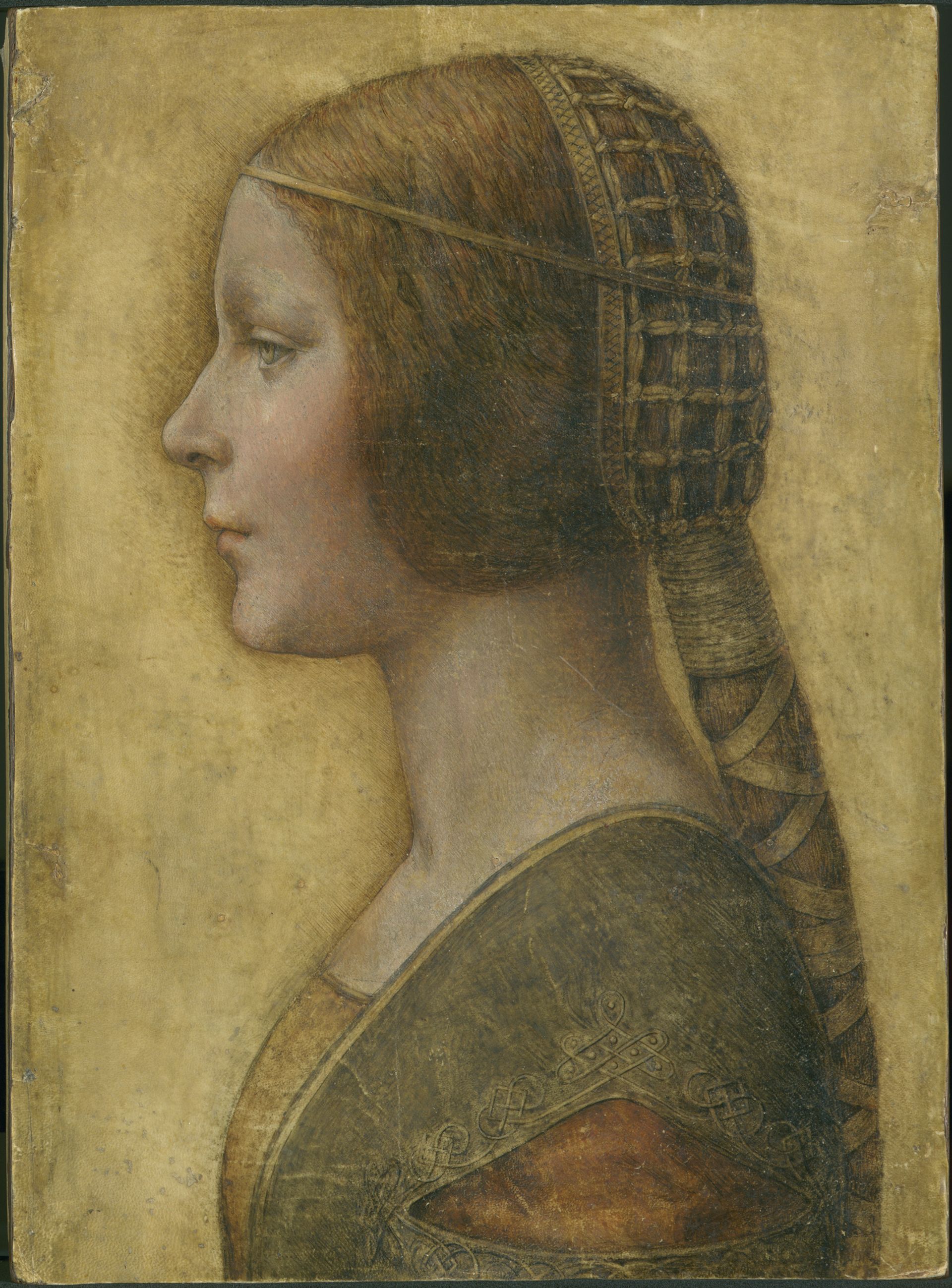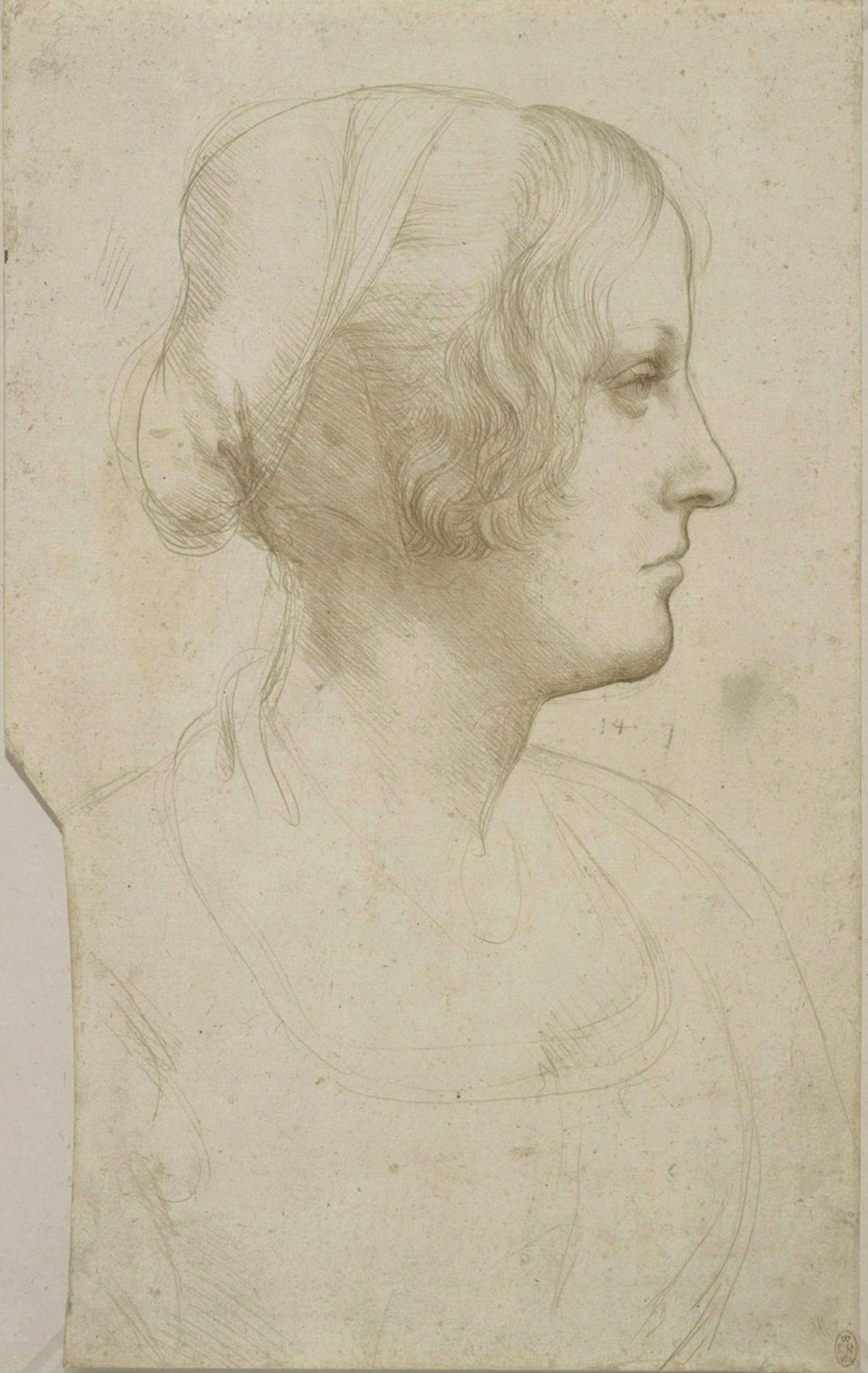Seeing some of my works from back in the early 1980s and late 1970s, a time when I think I did my best stuff, even though I was still quite young, is always a pleasure. They always look better than I remembered them.” With this apparently innocent passage from his memoir, A Forger’s Tale, Shaun Greenhalgh opened a new chapter in the drama of La Bella Principessa, a controversial drawing that has prompted headlines worldwide since being recognised by a handful of experts as a work by Leonardo da Vinci in 2010. Greenhalgh claims he is the author of this drawing.
The forger’s story is just the most eye-catching in a series of claims and counter-claims for the attribution of the drawing as a Leonardo. Perhaps more concerning to Martin Kemp, the emeritus research professor in the history of art at Oxford University, and Pascal Cotte, the scientist whose imaging techniques have supported Kemp’s attribution of the work as by the Renaissance master, is a recent article in the Institute for Historical Research’s journal Artibus et Historiae by Polish, British-based art expert Kasia Pisarek, which disputes their attribution. Both Cotte and Kemp have recently written retorts to their doubters. Meanwhile, Kemp will deliver a paper on the drawing at the Authentication in Art Congress in The Hague on 12 May.
Cottage-industry forger Greenhalgh is the man from Bolton, in the north of England, who stunned the world with forgeries crafted in cottage-industry fashion at home. In 2007, he was sentenced to almost five years in prison and he started to write his book while in jail. It was released last December. Easy to read and laced with humour, it reveals a shy young man of great invention, technical skill and intellectual curiosity, who provided local dealers with convincing imitations, before understanding that they were being resold as originals for much higher prices.

The astonishing diversity of his output was revealed during his trial. But his latest admission nonetheless comes as a surprise. Greenhalgh says he decided to tell all after receiving a copy of La Bella Principessa: the Story of the New Masterpiece by Leonardo da Vinci written by Kemp. He says he was startled to recognise his own work on the cover and shocked by the £150m valuation. “I drew this picture in 1978 when I worked at the Co-op [supermarket chain] in Bolton,” he explains. The sitter, he says, was “based on a girl called Sally, who worked on the checkouts”. Could Leonardo’s Milanese princess be Sally from the Co-op? Unfortunately, despite wide coverage in the British press, no photograph of the young lady has been produced, nor has she come forward to confirm the story. Perhaps she was upset at being described as “a bossy little bugger”.

Aged 16 or 17, he thought of trying his hand “at an Old Master drawing” on a rather large piece of vellum he found at a local antique shop, dating from 1587. “The first thing to do was to sand off the writing” on the document. “It looked too new for anything old to look right on it,” so he made the drawing on the other side, the “hair side” of the calf’s or lamb’s skin. “The texture of the sanding should still be seen on the reverse,” he claims. He made a light under-drawing in black chalk, which, he believes, might also still be visible. The final drawing was made in black, white and red—“earth pigments based in gum arabic” and oak gall ink. He claims he was not inspired by “any particular work”, but admits he tried to make it “a bit Leonardo-like”: as the master was left-handed, he turned the sheet clockwise to draw the hatching (a technique known by forgers for centuries). He fixed the drawing “with a misting of gum arabic in alcohol”, before selling it to a dealer in Harrogate in 1978. He also points to his own errors in modelling: “Although I am no Oxford professor, I could list umpteen reasons for not thinking this drawing to be by Leonardo.”
Kemp, whose position at Oxford so impressed Greenhalgh, finds “this extraordinary claim highly amusing… The silly season for Leonardo never closes. The story satisfies the public taste for ‘experts’ and the ‘art world elite’ being made to look ridiculous, but it is low on credibility. We are asked to believe that a self-taught 17-year-old was capable of such refined pen work and chalk drawing. His drawing has some lightweight decorative charm, but nowhere suggests that he could achieve this tautly descriptive line and subtly blended modelling.”
“The story satisfies the public taste for the ‘art world elite’ being made to look ridiculous”
The co-author of Kemp’s book is Pascal Cotte, whose Paris laboratory Lumière Technology analysed the piece for the current owner, Peter Silverman. He calls the forger’s story “inept” and states that “he lifted data from our book, but missed information”, published in a revised Italian edition. “For instance, he does not mention the yellow pigment mixed with the arabic gum of the ground layer or the lead-white highlights.” Cotte also calculated the number of arm muscles involved in drawing a line, to demonstrate that the curves would differ if the hatchings were drawn by a left-handed or a right-handed person.
Contradictory account More importantly, Greenhalgh’s account contradicts the story left by a previous owner of the parchment, Jeanne Marchig, who consigned it to Christie’s in 1998. She claimed she inherited it from her husband Giannino Marchig, an important restorer in Florence. “When they moved to Geneva in 1961, Jeanne hung it in her office,” states Les Ward, a close friend of Marchig, her executor, and the chair of her animal charity in France.
However, the Marchigs apparently never paid any real attention to the parchment. They were close to the great scholar Bernard Berenson and worked for museum curators in Florence as well as for the Wildensteins. None of them ever mentioned it. There is no documentary evidence of its existence, even though Leonardo was a celebrated artist whose every step was chronicled and commented on. This led some to suggest that Giovanni Marchig, a skilled painter and teacher of drawing, might have created it himself. This allegation was made by Michael Daley of ArtWatch, the organisation that campaigns against “injurious” conservation, and later implied in Artibus et Historiae by Kasia Pisarek (ArtWatch’s books editor). Her article prompted a lengthy reply from Kemp last November, which was rejected by the review on the grounds that it amounted to “a list of errata”.
High stakes Kemp’s and Cotte’s reputations are on the line. In 2010, Klaus Albrecht Schröder, the director of the Albertina museum in Vienna, told Art News: “The drawing was examined by our research centre, our curators, our restoration department and the Academy of Fine Arts. No one is convinced it is a Leonardo.” Carmen Bambach, a drawings curator at the Metropolitan Museum told us: “It does not look at all like a Leonardo.” The cautious keeper of prints and drawings at the British Museum, Hugo Chapman, insisted “there are about 5,000 known sheets drawn by da Vinci and none is on parchment” (in his 19-point reply to Pisarek, Kemp says there are a few).
But the most damning reaction came when the drawing was flatly declined by the National Gallery, London, for their Leonardo retrospective in 2011, even though a damaged and heavily restored painting, Salvator Mundi, was accepted: “There was never a question that the so-called Principessa could be hung among Leonardo’s masterworks,” says Arturo Galansino, the exhibition’s co-curator. At the scientific symposium then held at the gallery, no one defended the work. Even Carlo Pedretti, the Leonardo
expert who a year before had talked of a major rediscovery, seemed to be having second thoughts, insisting that he had “never discarded that it could be a fake”.
Taking sides: other Leonardo profiles

I first heard of the piece in 2008 from the late Bernard Darties, then head of operations with the French art police (the Office central de lutte contre le trafic des biens culturels). One of his contacts in the dealer community had apparently made an extraordinary discovery. Actually, Peter Silverman hates to be called a dealer. Tall, elegant and ever amiable, he lives in an apartment in Paris’s wealthiest district, full of classical paintings, Renaissance sculptures and Khmer heads. He was very excited about what he called “the discovery of a lifetime”: a portrait of a lady in profile, whose “sculptural classicism” and “purity of line” led him to attribute the work to Leonardo. He promised, with great enthusiasm, to provide an exclusive story on this revelation.
I had my doubts. Among other technical aspects, the drawing, especially the hatching parallels, which never cross the line of the face, looks too meticulous, far from Leonardo’s free movements and chiaroscuro technique. The provenance was also unclear. Silverman said he found it by chance in Switzerland. He was staying with friends, needed the phone to make a call and happened to open a desk drawer. “My heart was thumping wildly,” he told me. “I recognised the Florentine style and thought of Leonardo. It was like a flash.” It’s a seductive tale, but a fictitious one. The person who had the flash was renowned New York gallery owner Kate Ganz, who sold the drawing to Silverman in 2007 as a 19th-century pastiche, “obviously based on Leonardo’s paintings”, for $19,000. In July 2008, Simon Hewitt in the Antiques Trade Gazette broke the story of the discovery of a new Leonardo. The Sunday Times followed with an article entitled: “Picture kept in a drawer is £100m da Vinci”. A startled Ganz faxed the invoice, addressed to a Jersey-based Panamean company, to the Sunday Times editor, explaining she had bought the sheet for $22,000 at Christie’s ten years earlier. Silverman alleges he wanted to defend Ganz’s reputation: “I felt sorry for Kate, who missed the attribution, and I did not want to embarrass her. I decided to act as a gentleman.”
On a roll Meanwhile, the media frenzy gathered momentum. Dealer Simon Dickinson found it “relatively reasonable to think the piece was worth $100m”. Silverman spared no expense in attempting to authenticate his Leonardo. Coming in 2009, Martin Kemp’s positive opinion was a major breakthrough. Other confirmations followed from Mina Gregori of the Longhi Foundation in Florence, Alessandro Vezzosi from the Museo Ideale da Vinci, outside Florence, and Nicholas Turner, a former curator at the J. Paul Getty Museum.
When I conveyed my scepticism, Silverman claimed he was not after the money, which he intended to give to the Longhi Foundation, disabled children and animal welfare. He also said he would propose Martin Kemp to head up an institute for Renaissance studies in a manor next to Florence. This “damaging allegation” infuriated the Oxford professor, who claims “it has no foundation” and that he “never considered any financial involvement in any of his research”. At the London symposium, Kemp told me: “The main problem of this work is that it belongs to Silverman.”
Nonetheless, Kemp and Cotte fought tooth and nail to defend the attribution, rebutting any contradictory evidence. They identified the sitter as Bianca Maria Sforza, the Duke of Milan’s niece, and believe the sheet was extracted from a book printed on vellum dedicated to the glory of the dynasty, La Sforziada. Pascal Cotte found three stitch holes on the left margin of the vellum. Using macrophotography, he concluded that the dimensions of the portrait sheet “differ very slightly” from the book’s folios and the three holes “correspond very closely” to the ones in the book. However, the book has five holes and not three, a fact explained first as the result of a restoration of the book and then of the irregular cut of the page—in November, Kemp wrote that the “irregularity and extensive damage along the left margin” account for the absent stitch holes.
Even though its presence was not mentioned in any inventory and no one had ever heard of a precious drawing made with chalk stitched in a book where it would have been rubbed and damaged, both researchers considered it was “almost certain that the portrait was made for La Sforziada that was printed for the marriage of Bianca in 1496”. So the sitter had to be Bianca herself. They also saw proof in a fingerprint with which an expert from Montreal, Peter Paul Biro, found “points of comparison” with another on the unfinished Saint Jerome by Leonardo. “There cannot be any more doubt now,” said a euphoric Silverman. Kemp and Cotte withdrew this so-called evidence from the second edition of their book, calling the result “inconclusive” as there is no way to establish a “reliable set of reference prints for Leonardo”.
With each new chapter, the story becomes more extraordinary and the main characters more eccentric. As I was leaving Silverman’s home in 2008, he insisted on showing me some of his other “discoveries”—a marble faun’s head that he attributed to Bernini and a wooden crucifix, which he felt could have been by Michelangelo. The crucifix did end up in the Louvre after Silverman donated it to the museum; at present, La Bella Principessa seems unlikely to follow a similar path.
• The Authentication in Art Congress, Louwman Museum, The Hague, 11-13 May 2016. For details, visit authenticationinart.org

